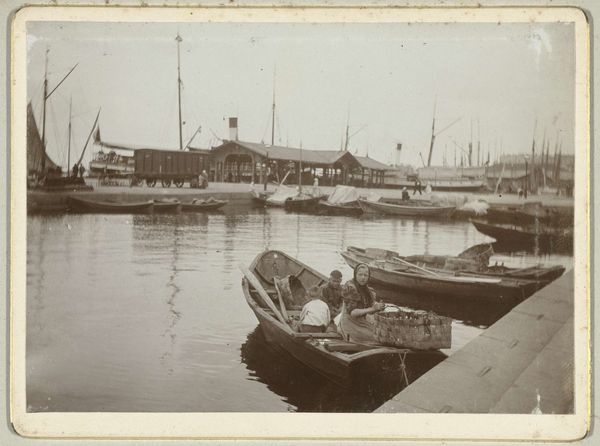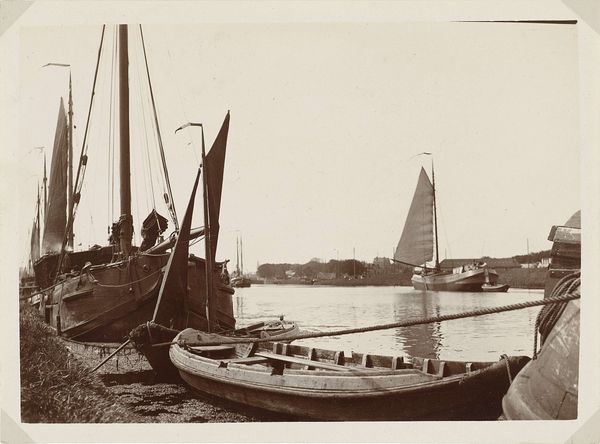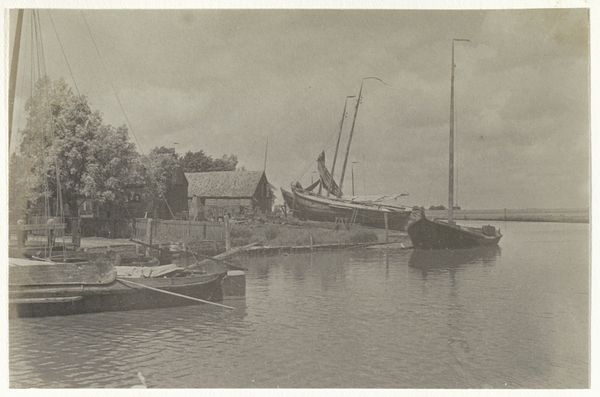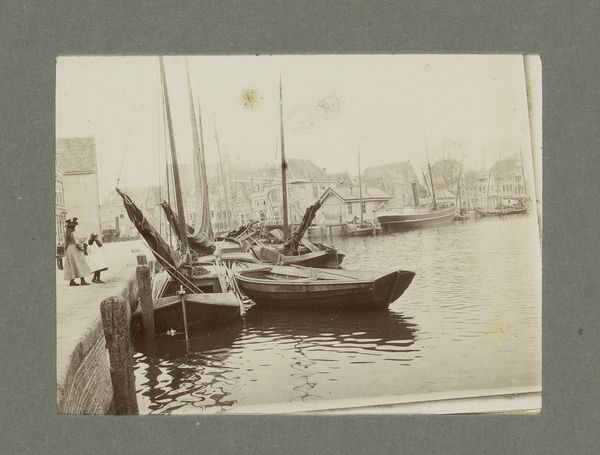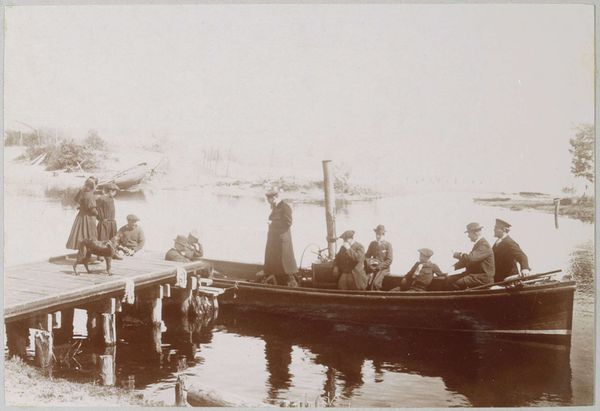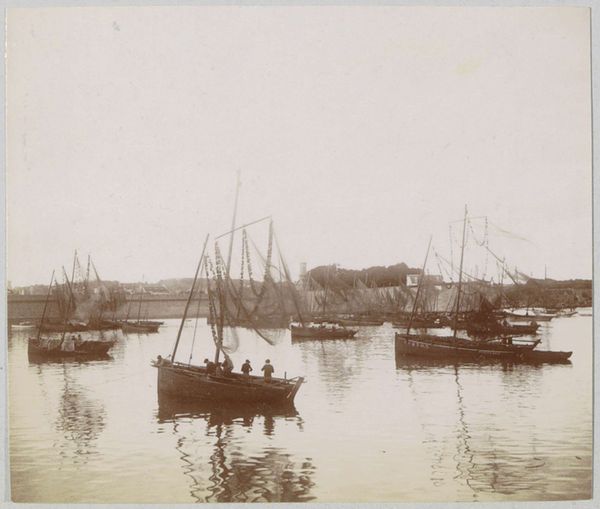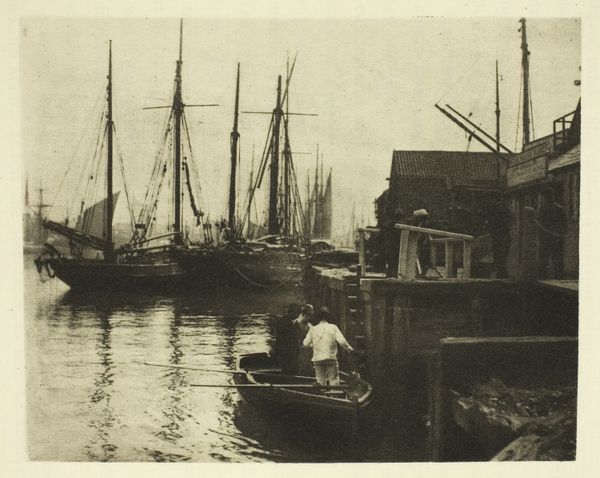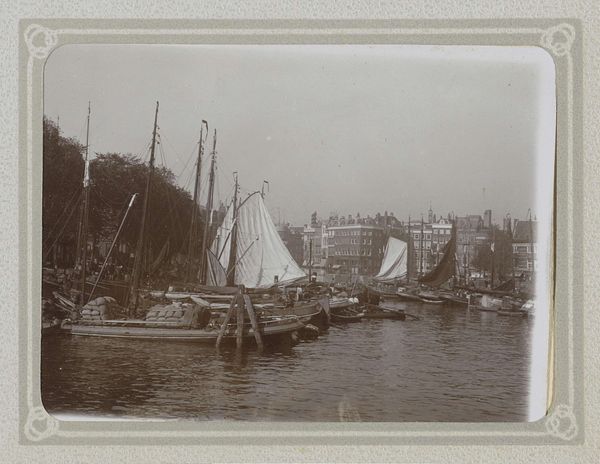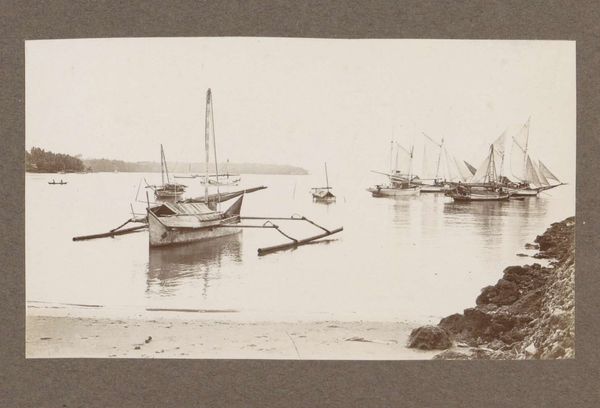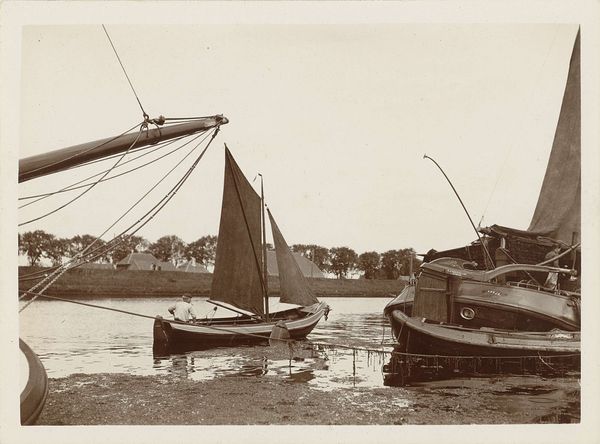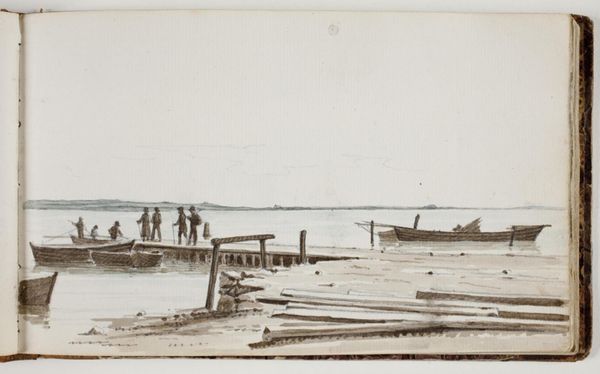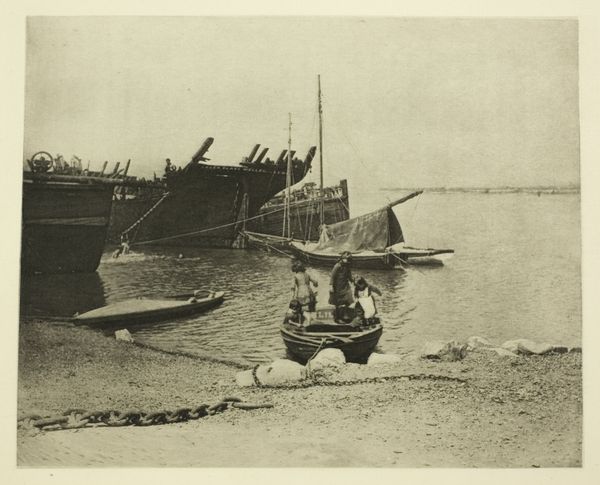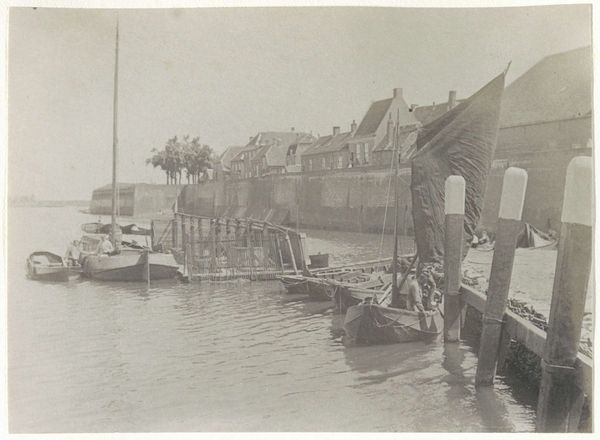
print, photography, gelatin-silver-print
# print
#
landscape
#
photography
#
gelatin-silver-print
Dimensions: height 168 mm, width 229 mm, height 243 mm, width 333 mm
Copyright: Rijks Museum: Open Domain
Editor: Here we have “Havengezicht op West-Terschelling,” a gelatin-silver print by Frits Freerks Fontein Fz., dating from around 1898 to 1915. The photograph has a captivating stillness; the reflections in the water add to its serene quality. I’m curious about the presence of so many children. What stands out to you when you view this piece? Curator: What I find particularly interesting is how this seemingly straightforward landscape photo serves as a snapshot of social dynamics in West-Terschelling during the late 19th and early 20th centuries. Look at the clothing of those children—it suggests a very specific social stratum and possibly even a codified system of education or perhaps even child labor. How might their presence challenge or reinforce existing power structures within the community? Editor: That's fascinating! I hadn’t thought about their clothing as a marker of social standing. It's true, they appear quite formally dressed for what seems like a casual day by the harbor. Curator: Exactly! And consider the composition: the rigid structure of the harbor versus the children on the beach. Is the artist subtly commenting on the relationship between industry, leisure, and societal expectations of the time? Were they arranged intentionally or by chance? These factors influence the public role the art provides. Editor: It makes me think about the photographer’s intention too. Was Fontein trying to document daily life or create something more staged? How might the emergence of photography impact painting depictions? Curator: That's key. The rise of photography prompted artists to redefine their role. Instead of purely documenting reality, artists explored subjective experience, inner emotions. How does the public interpret a staged image versus a "real" image? This photograph allows a glimpse into a specific historical moment and invites further exploration of societal norms. Editor: I’m definitely viewing this work with fresh eyes now. I learned so much today! Curator: Me too! Examining art through the lens of history and social context allows for a much richer and meaningful experience.
Comments
No comments
Be the first to comment and join the conversation on the ultimate creative platform.
